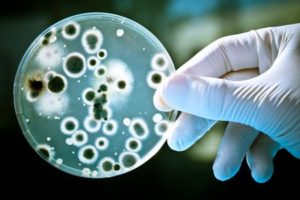 Antonie van Leeuwenhoek was a 17th century Dutch businessman and scholar who is widely regarded as the “father of microbiology” by modern scientists. Van Leeuwenhoek made his own microscopes that were up to 10 times more powerful than those of his contemporaries, and capable of producing detailed images of a quality that had never been seen before. With the help of his remarkable inventions, van Leeuwenhoek became the first person to directly observe bacteria, blood cells and sperm cells under a microscope. In fact, it took more than a century for biologists to build a microscope that was more powerful than van Leeuwenhoek’s.
Antonie van Leeuwenhoek was a 17th century Dutch businessman and scholar who is widely regarded as the “father of microbiology” by modern scientists. Van Leeuwenhoek made his own microscopes that were up to 10 times more powerful than those of his contemporaries, and capable of producing detailed images of a quality that had never been seen before. With the help of his remarkable inventions, van Leeuwenhoek became the first person to directly observe bacteria, blood cells and sperm cells under a microscope. In fact, it took more than a century for biologists to build a microscope that was more powerful than van Leeuwenhoek’s.
So how was Antonie van Leeuwenhoek able to build microscopes that were decades ahead of their time? The answer to this question has eluded scientists since the enigmatic scholar’s death.
Van Leeuwenhoek claimed that he was able to achieve high levels of magnification simply by grinding his own thin lenses by hand. Because his microscopes were so precise and powerful, however, other scientists have long doubted the veracity of this claim. Until recently, there was also no way to test van Leeuwenhoek’s claim without destroying one of his historic microscopes.
Now, thanks to advances in non-invasive 3D imaging techniques, scientists finally have an answer to this centuries-old question. As it turns out, van Leeuwenhoek was telling the truth after all.
“It would appear that there was no exotic method of production after all, but van Leeuwenhoek was just exceptionally skilled in grinding tiny lenses,” said Tiemen Cocquyt, curator of the museum where the historic microscopes are stored.
Non-invasive neutron tomography confirmed that the lenses were carefully ground, rather than blown as many researchers believed they were. This discovery is a testament not only to van Leeuwenhoek’s creativity and ingenuity, but also to his skill as a craftsman.
More than 300 years after he opened a window into the world of microorganisms, a new generation of scientists is using their own innovative imaging tools to gain a better understanding of van Leeuwenhoek’s legendary microscopes.
